Рейтинг книг Eugène Müntz
Начиная изучать творчество писателя - уделите внимание произведениям, которые находятся на вершине этого рейтинга. Смело нажимайте на стрелочки - вверх и вниз, если считаете, что какое-то произведение должно находиться выше или ниже в списке. В результате общих усилий, в том числе, на основании ваших оценок мы и получим самый адекватный рейтинг книг Eugène Müntz.
-
1.
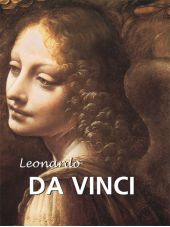 Leonardo’s early life was spent in Florence, his maturity in Milan, and the last three years of his life in France. Leonardo’s teacher was Verrocchio. First he was a goldsmith, then a painter and sculptor: as a painter, representative of the very scientific school of draughtsmanship; more famous as a sculptor, being the creator of the Colleoni statue at Venice, Leonardo was a man of striking physical attractiveness, great charm of manner and conversation, and mental accomplishment. He was well grounded in the sciences and mathematics of the day, as well as a gifted musician. His skill in draughtsmanship was extraordinary; shown by his numerous drawings as well as by his comparatively few paintings. His skill of hand is at the service of most minute observation and analytical research into the character and structure of form. Leonardo is the first in date of the great men who had the desire to create in a picture a kind of mystic unity brought about by the fusion of matter and spirit. Now that the Primitives had concluded their experiments, ceaselessly pursued during two centuries, by the conquest of the methods of painting, he was able to pronounce the words which served as a password to all later artists worthy of the name: painting is a spiritual thing, cosa mentale. He completed Florentine draughtsmanship in applying to modelling by light and shade, a sharp subtlety which his predecessors had used only to give greater precision to their contours. This marvellous draughtsmanship, this modelling and chiaroscuro he used not solely to paint the exterior appearance of the body but, as no one before him had done, to cast over it a reflection of the mystery of the inner life. In the Mona Lisa and his other masterpieces he even used landscape not merely as a more or less picturesque decoration, but as a sort of echo of that interior life and an element of a perfect harmony. Relying on the still quite novel laws of perspective this doctor of scholastic wisdom, who was at the same time an initiator of modern thought, substituted for the discursive manner of the Primitives the principle of concentration which is the basis of classical art. The picture is no longer presented to us as an almost fortuitous aggregate of details and episodes. It is an organism in which all the elements, lines and colours, shadows and lights, compose a subtle tracery converging on a spiritual, a sensuous centre. It was not with the external significance of objects, but with their inward and spiritual significance, that Leonardo was occupied. ... Далее
Leonardo’s early life was spent in Florence, his maturity in Milan, and the last three years of his life in France. Leonardo’s teacher was Verrocchio. First he was a goldsmith, then a painter and sculptor: as a painter, representative of the very scientific school of draughtsmanship; more famous as a sculptor, being the creator of the Colleoni statue at Venice, Leonardo was a man of striking physical attractiveness, great charm of manner and conversation, and mental accomplishment. He was well grounded in the sciences and mathematics of the day, as well as a gifted musician. His skill in draughtsmanship was extraordinary; shown by his numerous drawings as well as by his comparatively few paintings. His skill of hand is at the service of most minute observation and analytical research into the character and structure of form. Leonardo is the first in date of the great men who had the desire to create in a picture a kind of mystic unity brought about by the fusion of matter and spirit. Now that the Primitives had concluded their experiments, ceaselessly pursued during two centuries, by the conquest of the methods of painting, he was able to pronounce the words which served as a password to all later artists worthy of the name: painting is a spiritual thing, cosa mentale. He completed Florentine draughtsmanship in applying to modelling by light and shade, a sharp subtlety which his predecessors had used only to give greater precision to their contours. This marvellous draughtsmanship, this modelling and chiaroscuro he used not solely to paint the exterior appearance of the body but, as no one before him had done, to cast over it a reflection of the mystery of the inner life. In the Mona Lisa and his other masterpieces he even used landscape not merely as a more or less picturesque decoration, but as a sort of echo of that interior life and an element of a perfect harmony. Relying on the still quite novel laws of perspective this doctor of scholastic wisdom, who was at the same time an initiator of modern thought, substituted for the discursive manner of the Primitives the principle of concentration which is the basis of classical art. The picture is no longer presented to us as an almost fortuitous aggregate of details and episodes. It is an organism in which all the elements, lines and colours, shadows and lights, compose a subtle tracery converging on a spiritual, a sensuous centre. It was not with the external significance of objects, but with their inward and spiritual significance, that Leonardo was occupied. ... Далее -
2.
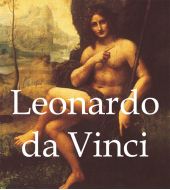 Leonardo’s early life was spent in Florence, his maturity in Milan, and the last three years of his life in France. Leonardo’s teacher was Verrocchio. First he was a goldsmith, then a painter and sculptor: as a painter, representative of the very scientific school of draughtsmanship; more famous as a sculptor, being the creator of the Colleoni statue at Venice, Leonardo was a man of striking physical attractiveness, great charm of manner and conversation, and mental accomplishment. He was well grounded in the sciences and mathematics of the day, as well as a gifted musician. His skill in draughtsmanship was extraordinary; shown by his numerous drawings as well as by his comparatively few paintings. His skill of hand is at the service of most minute observation and analytical research into the character and structure of form. Leonardo is the first in date of the great men who had the desire to create in a picture a kind of mystic unity brought about by the fusion of matter and spirit. Now that the Primitives had concluded their experiments, ceaselessly pursued during two centuries, by the conquest of the methods of painting, he was able to pronounce the words which served as a password to all later artists worthy of the name: painting is a spiritual thing, cosa mentale. He completed Florentine draughtsmanship in applying to modelling by light and shade, a sharp subtlety which his predecessors had used only to give greater precision to their contours. This marvellous draughtsmanship, this modelling and chiaroscuro he used not solely to paint the exterior appearance of the body but, as no one before him had done, to cast over it a reflection of the mystery of the inner life. In the Mona Lisa and his other masterpieces he even used landscape not merely as a more or less picturesque decoration, but as a sort of echo of that interior life and an element of a perfect harmony. Relying on the still quite novel laws of perspective this doctor of scholastic wisdom, who was at the same time an initiator of modern thought, substituted for the discursive manner of the Primitives the principle of concentration which is the basis of classical art. The picture is no longer presented to us as an almost fortuitous aggregate of details and episodes. It is an organism in which all the elements, lines and colours, shadows and lights, compose a subtle tracery converging on a spiritual, a sensuous centre. It was not with the external significance of objects, but with their inward and spiritual significance, that Leonardo was occupied. ... Далее
Leonardo’s early life was spent in Florence, his maturity in Milan, and the last three years of his life in France. Leonardo’s teacher was Verrocchio. First he was a goldsmith, then a painter and sculptor: as a painter, representative of the very scientific school of draughtsmanship; more famous as a sculptor, being the creator of the Colleoni statue at Venice, Leonardo was a man of striking physical attractiveness, great charm of manner and conversation, and mental accomplishment. He was well grounded in the sciences and mathematics of the day, as well as a gifted musician. His skill in draughtsmanship was extraordinary; shown by his numerous drawings as well as by his comparatively few paintings. His skill of hand is at the service of most minute observation and analytical research into the character and structure of form. Leonardo is the first in date of the great men who had the desire to create in a picture a kind of mystic unity brought about by the fusion of matter and spirit. Now that the Primitives had concluded their experiments, ceaselessly pursued during two centuries, by the conquest of the methods of painting, he was able to pronounce the words which served as a password to all later artists worthy of the name: painting is a spiritual thing, cosa mentale. He completed Florentine draughtsmanship in applying to modelling by light and shade, a sharp subtlety which his predecessors had used only to give greater precision to their contours. This marvellous draughtsmanship, this modelling and chiaroscuro he used not solely to paint the exterior appearance of the body but, as no one before him had done, to cast over it a reflection of the mystery of the inner life. In the Mona Lisa and his other masterpieces he even used landscape not merely as a more or less picturesque decoration, but as a sort of echo of that interior life and an element of a perfect harmony. Relying on the still quite novel laws of perspective this doctor of scholastic wisdom, who was at the same time an initiator of modern thought, substituted for the discursive manner of the Primitives the principle of concentration which is the basis of classical art. The picture is no longer presented to us as an almost fortuitous aggregate of details and episodes. It is an organism in which all the elements, lines and colours, shadows and lights, compose a subtle tracery converging on a spiritual, a sensuous centre. It was not with the external significance of objects, but with their inward and spiritual significance, that Leonardo was occupied. ... Далее -
3.
 Leonardo’s early life was spent in Florence, his maturity in Milan, and the last three years of his life in France. Leonardo’s teacher was Verrocchio. First he was a goldsmith, then a painter and sculptor: as a painter, representative of the very scientific school of draughtsmanship; more famous as a sculptor, being the creator of the Colleoni statue at Venice, Leonardo was a man of striking physical attractiveness, great charm of manner and conversation, and mental accomplishment. He was well grounded in the sciences and mathematics of the day, as well as a gifted musician. His skill in draughtsmanship was extraordinary; shown by his numerous drawings as well as by his comparatively few paintings. His skill of hand is at the service of most minute observation and analytical research into the character and structure of form. Leonardo is the first in date of the great men who had the desire to create in a picture a kind of mystic unity brought about by the fusion of matter and spirit. Now that the Primitives had concluded their experiments, ceaselessly pursued during two centuries, by the conquest of the methods of painting, he was able to pronounce the words which served as a password to all later artists worthy of the name: painting is a spiritual thing, cosa mentale. He completed Florentine draughtsmanship in applying to modelling by light and shade, a sharp subtlety which his predecessors had used only to give greater precision to their contours. This marvellous draughtsmanship, this modelling and chiaroscuro he used not solely to paint the exterior appearance of the body but, as no one before him had done, to cast over it a reflection of the mystery of the inner life. In the Mona Lisa and his other masterpieces he even used landscape not merely as a more or less picturesque decoration, but as a sort of echo of that interior life and an element of a perfect harmony. Relying on the still quite novel laws of perspective this doctor of scholastic wisdom, who was at the same time an initiator of modern thought, substituted for the discursive manner of the Primitives the principle of concentration which is the basis of classical art. The picture is no longer presented to us as an almost fortuitous aggregate of details and episodes. It is an organism in which all the elements, lines and colours, shadows and lights, compose a subtle tracery converging on a spiritual, a sensuous centre. It was not with the external significance of objects, but with their inward and spiritual significance, that Leonardo was occupied. ... Далее
Leonardo’s early life was spent in Florence, his maturity in Milan, and the last three years of his life in France. Leonardo’s teacher was Verrocchio. First he was a goldsmith, then a painter and sculptor: as a painter, representative of the very scientific school of draughtsmanship; more famous as a sculptor, being the creator of the Colleoni statue at Venice, Leonardo was a man of striking physical attractiveness, great charm of manner and conversation, and mental accomplishment. He was well grounded in the sciences and mathematics of the day, as well as a gifted musician. His skill in draughtsmanship was extraordinary; shown by his numerous drawings as well as by his comparatively few paintings. His skill of hand is at the service of most minute observation and analytical research into the character and structure of form. Leonardo is the first in date of the great men who had the desire to create in a picture a kind of mystic unity brought about by the fusion of matter and spirit. Now that the Primitives had concluded their experiments, ceaselessly pursued during two centuries, by the conquest of the methods of painting, he was able to pronounce the words which served as a password to all later artists worthy of the name: painting is a spiritual thing, cosa mentale. He completed Florentine draughtsmanship in applying to modelling by light and shade, a sharp subtlety which his predecessors had used only to give greater precision to their contours. This marvellous draughtsmanship, this modelling and chiaroscuro he used not solely to paint the exterior appearance of the body but, as no one before him had done, to cast over it a reflection of the mystery of the inner life. In the Mona Lisa and his other masterpieces he even used landscape not merely as a more or less picturesque decoration, but as a sort of echo of that interior life and an element of a perfect harmony. Relying on the still quite novel laws of perspective this doctor of scholastic wisdom, who was at the same time an initiator of modern thought, substituted for the discursive manner of the Primitives the principle of concentration which is the basis of classical art. The picture is no longer presented to us as an almost fortuitous aggregate of details and episodes. It is an organism in which all the elements, lines and colours, shadows and lights, compose a subtle tracery converging on a spiritual, a sensuous centre. It was not with the external significance of objects, but with their inward and spiritual significance, that Leonardo was occupied. ... Далее -
4.
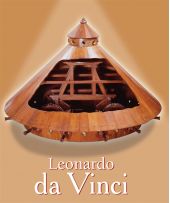 Leonardo’s early life was spent in Florence, his maturity in Milan, and the last three years of his life in France. Leonardo’s teacher was Verrocchio. First he was a goldsmith, then a painter and sculptor: as a painter, representative of the very scientific school of draughtsmanship; more famous as a sculptor, being the creator of the Colleoni statue at Venice, Leonardo was a man of striking physical attractiveness, great charm of manner and conversation, and mental accomplishment. He was well grounded in the sciences and mathematics of the day, as well as a gifted musician. His skill in draughtsmanship was extraordinary; shown by his numerous drawings as well as by his comparatively few paintings. His skill of hand is at the service of most minute observation and analytical research into the character and structure of form. Leonardo is the first in date of the great men who had the desire to create in a picture a kind of mystic unity brought about by the fusion of matter and spirit. Now that the Primitives had concluded their experiments, ceaselessly pursued during two centuries, by the conquest of the methods of painting, he was able to pronounce the words which served as a password to all later artists worthy of the name: painting is a spiritual thing, cosa mentale. He completed Florentine draughtsmanship in applying to modelling by light and shade, a sharp subtlety which his predecessors had used only to give greater precision to their contours. This marvellous draughtsmanship, this modelling and chiaroscuro he used not solely to paint the exterior appearance of the body but, as no one before him had done, to cast over it a reflection of the mystery of the inner life. In the Mona Lisa and his other masterpieces he even used landscape not merely as a more or less picturesque decoration, but as a sort of echo of that interior life and an element of a perfect harmony. Relying on the still quite novel laws of perspective this doctor of scholastic wisdom, who was at the same time an initiator of modern thought, substituted for the discursive manner of the Primitives the principle of concentration which is the basis of classical art. The picture is no longer presented to us as an almost fortuitous aggregate of details and episodes. It is an organism in which all the elements, lines and colours, shadows and lights, compose a subtle tracery converging on a spiritual, a sensuous centre. It was not with the external significance of objects, but with their inward and spiritual significance, that Leonardo was occupied. ... Далее
Leonardo’s early life was spent in Florence, his maturity in Milan, and the last three years of his life in France. Leonardo’s teacher was Verrocchio. First he was a goldsmith, then a painter and sculptor: as a painter, representative of the very scientific school of draughtsmanship; more famous as a sculptor, being the creator of the Colleoni statue at Venice, Leonardo was a man of striking physical attractiveness, great charm of manner and conversation, and mental accomplishment. He was well grounded in the sciences and mathematics of the day, as well as a gifted musician. His skill in draughtsmanship was extraordinary; shown by his numerous drawings as well as by his comparatively few paintings. His skill of hand is at the service of most minute observation and analytical research into the character and structure of form. Leonardo is the first in date of the great men who had the desire to create in a picture a kind of mystic unity brought about by the fusion of matter and spirit. Now that the Primitives had concluded their experiments, ceaselessly pursued during two centuries, by the conquest of the methods of painting, he was able to pronounce the words which served as a password to all later artists worthy of the name: painting is a spiritual thing, cosa mentale. He completed Florentine draughtsmanship in applying to modelling by light and shade, a sharp subtlety which his predecessors had used only to give greater precision to their contours. This marvellous draughtsmanship, this modelling and chiaroscuro he used not solely to paint the exterior appearance of the body but, as no one before him had done, to cast over it a reflection of the mystery of the inner life. In the Mona Lisa and his other masterpieces he even used landscape not merely as a more or less picturesque decoration, but as a sort of echo of that interior life and an element of a perfect harmony. Relying on the still quite novel laws of perspective this doctor of scholastic wisdom, who was at the same time an initiator of modern thought, substituted for the discursive manner of the Primitives the principle of concentration which is the basis of classical art. The picture is no longer presented to us as an almost fortuitous aggregate of details and episodes. It is an organism in which all the elements, lines and colours, shadows and lights, compose a subtle tracery converging on a spiritual, a sensuous centre. It was not with the external significance of objects, but with their inward and spiritual significance, that Leonardo was occupied. ... Далее -
5.
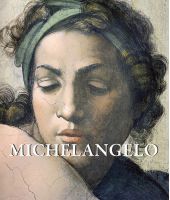 Michelangelo war, genau wie Leonardo, ein “universeller” Künstler: Maler, Baumeister, Bildhauer und Dichter. Er war der Hauptmeister der italienischen Hochrenaissance und Wegbereiter des Manierismus. Seine Vorliebe galt der als Ausdruck der Leidenschaft angesehenen Skulptur. Nach Landschaften sucht man bei ihm vergeblich. Alles, was den Menschen ausmacht, seine Gefühle, Leidenschaften, seinen Intellekt, wollte Michelangelo durch den nackten Körper zum Ausdruck bringen, den er kaum einmal in einer Ruhestellung, ohne Bewegung zeigte. Die Malkunst war für ihn nur ein anderes, leichter zu handhabendes Mittel, um das in künstlerische Worte zu fassen, was seine Seele bewegte. So gestaltete er, der sich selbst in erster Linie als Bildhauer sah, ein Deckengemälde, wie es lyrischer und epischer in der gesamten Geschichte der Malkunst nicht zu finden ist: die Decke der Sixtinischen Kapelle. Über die riesige Fläche von 1000 m² entfaltete er hier seine ganze Genialität. Als er die Arbeit im Auftrag von Papst Klemens VII. (1478 bis 1534) aufnahm, war er gerade mal 34 Jahre alt. In seinem letzten Gemälde, dem Jüngsten Gericht an der Wand der Sixtinischen Kapelle, ließ er seinen eigenen Qualen freien Lauf. Was bedeuteten künstlerische Gesetze und Konventionen im Vergleich zu dem Schmerz, der in seinem Inneren tobte und ein Ventil brauchte? Kein Wunder, dass seine Zeitgenossen den Ausdruck terribilità auf seinen Stil anwandten. Seine Figuren entführen uns in Gefilde der Phantasie, die weit über das hinausgehen, was wir normalerweise mit ihrem Namen verbinden. ... Далее
Michelangelo war, genau wie Leonardo, ein “universeller” Künstler: Maler, Baumeister, Bildhauer und Dichter. Er war der Hauptmeister der italienischen Hochrenaissance und Wegbereiter des Manierismus. Seine Vorliebe galt der als Ausdruck der Leidenschaft angesehenen Skulptur. Nach Landschaften sucht man bei ihm vergeblich. Alles, was den Menschen ausmacht, seine Gefühle, Leidenschaften, seinen Intellekt, wollte Michelangelo durch den nackten Körper zum Ausdruck bringen, den er kaum einmal in einer Ruhestellung, ohne Bewegung zeigte. Die Malkunst war für ihn nur ein anderes, leichter zu handhabendes Mittel, um das in künstlerische Worte zu fassen, was seine Seele bewegte. So gestaltete er, der sich selbst in erster Linie als Bildhauer sah, ein Deckengemälde, wie es lyrischer und epischer in der gesamten Geschichte der Malkunst nicht zu finden ist: die Decke der Sixtinischen Kapelle. Über die riesige Fläche von 1000 m² entfaltete er hier seine ganze Genialität. Als er die Arbeit im Auftrag von Papst Klemens VII. (1478 bis 1534) aufnahm, war er gerade mal 34 Jahre alt. In seinem letzten Gemälde, dem Jüngsten Gericht an der Wand der Sixtinischen Kapelle, ließ er seinen eigenen Qualen freien Lauf. Was bedeuteten künstlerische Gesetze und Konventionen im Vergleich zu dem Schmerz, der in seinem Inneren tobte und ein Ventil brauchte? Kein Wunder, dass seine Zeitgenossen den Ausdruck terribilità auf seinen Stil anwandten. Seine Figuren entführen uns in Gefilde der Phantasie, die weit über das hinausgehen, was wir normalerweise mit ihrem Namen verbinden. ... Далее -
6.
 Michelangelo war, genau wie Leonardo, ein “universeller” Künstler: Maler, Baumeister, Bildhauer und Dichter. Er war der Hauptmeister der italienischen Hochrenaissance und Wegbereiter des Manierismus. Seine Vorliebe galt der als Ausdruck der Leidenschaft angesehenen Skulptur. Nach Landschaften sucht man bei ihm vergeblich. Alles, was den Menschen ausmacht, seine Gefühle, Leidenschaften, seinen Intellekt, wollte Michelangelo durch den nackten Körper zum Ausdruck bringen, den er kaum einmal in einer Ruhestellung, ohne Bewegung zeigte. Die Malkunst war für ihn nur ein anderes, leichter zu handhabendes Mittel, um das in künstlerische Worte zu fassen, was seine Seele bewegte. So gestaltete er, der sich selbst in erster Linie als Bildhauer sah, ein Deckengemälde, wie es lyrischer und epischer in der gesamten Geschichte der Malkunst nicht zu finden ist: die Decke der Sixtinischen Kapelle. Über die riesige Fläche von 1000 m² entfaltete er hier seine ganze Genialität. Als er die Arbeit im Auftrag von Papst Klemens VII. (1478 bis 1534) aufnahm, war er gerade mal 34 Jahre alt. In seinem letzten Gemälde, dem Jüngsten Gericht an der Wand der Sixtinischen Kapelle, ließ er seinen eigenen Qualen freien Lauf. Was bedeuteten künstlerische Gesetze und Konventionen im Vergleich zu dem Schmerz, der in seinem Inneren tobte und ein Ventil brauchte? Kein Wunder, dass seine Zeitgenossen den Ausdruck terribilità auf seinen Stil anwandten. Seine Figuren entführen uns in Gefilde der Phantasie, die weit über das hinausgehen, was wir normalerweise mit ihrem Namen verbinden. ... Далее
Michelangelo war, genau wie Leonardo, ein “universeller” Künstler: Maler, Baumeister, Bildhauer und Dichter. Er war der Hauptmeister der italienischen Hochrenaissance und Wegbereiter des Manierismus. Seine Vorliebe galt der als Ausdruck der Leidenschaft angesehenen Skulptur. Nach Landschaften sucht man bei ihm vergeblich. Alles, was den Menschen ausmacht, seine Gefühle, Leidenschaften, seinen Intellekt, wollte Michelangelo durch den nackten Körper zum Ausdruck bringen, den er kaum einmal in einer Ruhestellung, ohne Bewegung zeigte. Die Malkunst war für ihn nur ein anderes, leichter zu handhabendes Mittel, um das in künstlerische Worte zu fassen, was seine Seele bewegte. So gestaltete er, der sich selbst in erster Linie als Bildhauer sah, ein Deckengemälde, wie es lyrischer und epischer in der gesamten Geschichte der Malkunst nicht zu finden ist: die Decke der Sixtinischen Kapelle. Über die riesige Fläche von 1000 m² entfaltete er hier seine ganze Genialität. Als er die Arbeit im Auftrag von Papst Klemens VII. (1478 bis 1534) aufnahm, war er gerade mal 34 Jahre alt. In seinem letzten Gemälde, dem Jüngsten Gericht an der Wand der Sixtinischen Kapelle, ließ er seinen eigenen Qualen freien Lauf. Was bedeuteten künstlerische Gesetze und Konventionen im Vergleich zu dem Schmerz, der in seinem Inneren tobte und ein Ventil brauchte? Kein Wunder, dass seine Zeitgenossen den Ausdruck terribilità auf seinen Stil anwandten. Seine Figuren entführen uns in Gefilde der Phantasie, die weit über das hinausgehen, was wir normalerweise mit ihrem Namen verbinden. ... Далее -
7.
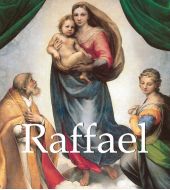 Raffael (1483-1520), ein Zeitgenosse Leonardo da Vincis und Michelangelos und gleichzeitig der jüngste dieser drei „Titanen“ der Hochrenaissance, war über lange Zeit der Inbegriff des dynamischen, jungen Malergenies – eine Sichtweise, die durch seinen frühen Tod mit 37 Jahren noch verstärkt wurde. Seine Sixtinische Madonna wurde oft als das bedeutendste Kunstwerk des europäischen Abendlandes bezeichnet und der vollendete Petersdom in Rom ist ein bleibender Beweis für sein außerordentliches Können als Architekt und Bauleiter. Heutzutage jedoch scheinen die einzigen Überbleibsel vom einstigen Ruhm des Malers die beiden Puttenfiguren aus der Madonna zu sein, die millionenfach Poster, Notizbücher und Poesiealben zieren. Dieses Buch legt dar, warum Raffaels Leben und Schaffen auch heute noch relevant für den modernen Kunstbegriff ist und deckt mit Hilfe zahlreicher hochwertiger Abbildungen die versteckte Komplexität hinter seinen scheinbar einfachen Bildern auf. ... Далее
Raffael (1483-1520), ein Zeitgenosse Leonardo da Vincis und Michelangelos und gleichzeitig der jüngste dieser drei „Titanen“ der Hochrenaissance, war über lange Zeit der Inbegriff des dynamischen, jungen Malergenies – eine Sichtweise, die durch seinen frühen Tod mit 37 Jahren noch verstärkt wurde. Seine Sixtinische Madonna wurde oft als das bedeutendste Kunstwerk des europäischen Abendlandes bezeichnet und der vollendete Petersdom in Rom ist ein bleibender Beweis für sein außerordentliches Können als Architekt und Bauleiter. Heutzutage jedoch scheinen die einzigen Überbleibsel vom einstigen Ruhm des Malers die beiden Puttenfiguren aus der Madonna zu sein, die millionenfach Poster, Notizbücher und Poesiealben zieren. Dieses Buch legt dar, warum Raffaels Leben und Schaffen auch heute noch relevant für den modernen Kunstbegriff ist und deckt mit Hilfe zahlreicher hochwertiger Abbildungen die versteckte Komplexität hinter seinen scheinbar einfachen Bildern auf. ... Далее -
8.
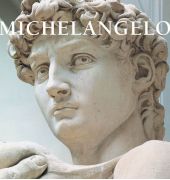 Michelangelo war, genau wie Leonardo, ein “universeller” Künstler: Maler, Baumeister, Bildhauer und Dichter. Er war der Hauptmeister der italienischen Hochrenaissance und Wegbereiter des Manierismus. Seine Vorliebe galt der als Ausdruck der Leidenschaft angesehenen Skulptur. Nach Landschaften sucht man bei ihm vergeblich. Alles, was den Menschen ausmacht, seine Gefühle, Leidenschaften, seinen Intellekt, wollte Michelangelo durch den nackten Körper zum Ausdruck bringen, den er kaum einmal in einer Ruhestellung, ohne Bewegung zeigte. Die Malkunst war für ihn nur ein anderes, leichter zu handhabendes Mittel, um das in künstlerische Worte zu fassen, was seine Seele bewegte. So gestaltete er, der sich selbst in erster Linie als Bildhauer sah, ein Deckengemälde, wie es lyrischer und epischer in der gesamten Geschichte der Malkunst nicht zu finden ist: die Decke der Sixtinischen Kapelle. Über die riesige Fläche von 1000 m² entfaltete er hier seine ganze Genialität. Als er die Arbeit im Auftrag von Papst Klemens VII. (1478 bis 1534) aufnahm, war er gerade mal 34 Jahre alt. In seinem letzten Gemälde, dem Jüngsten Gericht an der Wand der Sixtinischen Kapelle, ließ er seinen eigenen Qualen freien Lauf. Was bedeuteten künstlerische Gesetze und Konventionen im Vergleich zu dem Schmerz, der in seinem Inneren tobte und ein Ventil brauchte? Kein Wunder, dass seine Zeitgenossen den Ausdruck terribilità auf seinen Stil anwandten. Seine Figuren entführen uns in Gefilde der Phantasie, die weit über das hinausgehen, was wir normalerweise mit ihrem Namen verbinden. ... Далее
Michelangelo war, genau wie Leonardo, ein “universeller” Künstler: Maler, Baumeister, Bildhauer und Dichter. Er war der Hauptmeister der italienischen Hochrenaissance und Wegbereiter des Manierismus. Seine Vorliebe galt der als Ausdruck der Leidenschaft angesehenen Skulptur. Nach Landschaften sucht man bei ihm vergeblich. Alles, was den Menschen ausmacht, seine Gefühle, Leidenschaften, seinen Intellekt, wollte Michelangelo durch den nackten Körper zum Ausdruck bringen, den er kaum einmal in einer Ruhestellung, ohne Bewegung zeigte. Die Malkunst war für ihn nur ein anderes, leichter zu handhabendes Mittel, um das in künstlerische Worte zu fassen, was seine Seele bewegte. So gestaltete er, der sich selbst in erster Linie als Bildhauer sah, ein Deckengemälde, wie es lyrischer und epischer in der gesamten Geschichte der Malkunst nicht zu finden ist: die Decke der Sixtinischen Kapelle. Über die riesige Fläche von 1000 m² entfaltete er hier seine ganze Genialität. Als er die Arbeit im Auftrag von Papst Klemens VII. (1478 bis 1534) aufnahm, war er gerade mal 34 Jahre alt. In seinem letzten Gemälde, dem Jüngsten Gericht an der Wand der Sixtinischen Kapelle, ließ er seinen eigenen Qualen freien Lauf. Was bedeuteten künstlerische Gesetze und Konventionen im Vergleich zu dem Schmerz, der in seinem Inneren tobte und ein Ventil brauchte? Kein Wunder, dass seine Zeitgenossen den Ausdruck terribilità auf seinen Stil anwandten. Seine Figuren entführen uns in Gefilde der Phantasie, die weit über das hinausgehen, was wir normalerweise mit ihrem Namen verbinden. ... Далее -
9.
 Michelangelo war, genau wie Leonardo, ein “universeller” Künstler: Maler, Baumeister, Bildhauer und Dichter. Er war der Hauptmeister der italienischen Hochrenaissance und Wegbereiter des Manierismus. Seine Vorliebe galt der als Ausdruck der Leidenschaft angesehenen Skulptur. Nach Landschaften sucht man bei ihm vergeblich. Alles, was den Menschen ausmacht, seine Gefühle, Leidenschaften, seinen Intellekt, wollte Michelangelo durch den nackten Körper zum Ausdruck bringen, den er kaum einmal in einer Ruhestellung, ohne Bewegung zeigte. Die Malkunst war für ihn nur ein anderes, leichter zu handhabendes Mittel, um das in künstlerische Worte zu fassen, was seine Seele bewegte. So gestaltete er, der sich selbst in erster Linie als Bildhauer sah, ein Deckengemälde, wie es lyrischer und epischer in der gesamten Geschichte der Malkunst nicht zu finden ist: die Decke der Sixtinischen Kapelle. Über die riesige Fläche von 1000 m² entfaltete er hier seine ganze Genialität. Als er die Arbeit im Auftrag von Papst Klemens VII. (1478 bis 1534) aufnahm, war er gerade mal 34 Jahre alt. In seinem letzten Gemälde, dem Jüngsten Gericht an der Wand der Sixtinischen Kapelle, ließ er seinen eigenen Qualen freien Lauf. Was bedeuteten künstlerische Gesetze und Konventionen im Vergleich zu dem Schmerz, der in seinem Inneren tobte und ein Ventil brauchte? Kein Wunder, dass seine Zeitgenossen den Ausdruck terribilità auf seinen Stil anwandten. Seine Figuren entführen uns in Gefilde der Phantasie, die weit über das hinausgehen, was wir normalerweise mit ihrem Namen verbinden. ... Далее
Michelangelo war, genau wie Leonardo, ein “universeller” Künstler: Maler, Baumeister, Bildhauer und Dichter. Er war der Hauptmeister der italienischen Hochrenaissance und Wegbereiter des Manierismus. Seine Vorliebe galt der als Ausdruck der Leidenschaft angesehenen Skulptur. Nach Landschaften sucht man bei ihm vergeblich. Alles, was den Menschen ausmacht, seine Gefühle, Leidenschaften, seinen Intellekt, wollte Michelangelo durch den nackten Körper zum Ausdruck bringen, den er kaum einmal in einer Ruhestellung, ohne Bewegung zeigte. Die Malkunst war für ihn nur ein anderes, leichter zu handhabendes Mittel, um das in künstlerische Worte zu fassen, was seine Seele bewegte. So gestaltete er, der sich selbst in erster Linie als Bildhauer sah, ein Deckengemälde, wie es lyrischer und epischer in der gesamten Geschichte der Malkunst nicht zu finden ist: die Decke der Sixtinischen Kapelle. Über die riesige Fläche von 1000 m² entfaltete er hier seine ganze Genialität. Als er die Arbeit im Auftrag von Papst Klemens VII. (1478 bis 1534) aufnahm, war er gerade mal 34 Jahre alt. In seinem letzten Gemälde, dem Jüngsten Gericht an der Wand der Sixtinischen Kapelle, ließ er seinen eigenen Qualen freien Lauf. Was bedeuteten künstlerische Gesetze und Konventionen im Vergleich zu dem Schmerz, der in seinem Inneren tobte und ein Ventil brauchte? Kein Wunder, dass seine Zeitgenossen den Ausdruck terribilità auf seinen Stil anwandten. Seine Figuren entführen uns in Gefilde der Phantasie, die weit über das hinausgehen, was wir normalerweise mit ihrem Namen verbinden. ... Далее -
10.
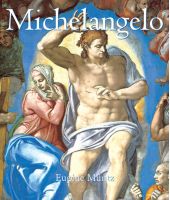 Michelangelo war, genau wie Leonardo, ein “universeller” Künstler: Maler, Baumeister, Bildhauer und Dichter. Er war der Hauptmeister der italienischen Hochrenaissance und Wegbereiter des Manierismus. Seine Vorliebe galt der als Ausdruck der Leidenschaft angesehenen Skulptur. Nach Landschaften sucht man bei ihm vergeblich. Alles, was den Menschen ausmacht, seine Gefühle, Leidenschaften, seinen Intellekt, wollte Michelangelo durch den nackten Körper zum Ausdruck bringen, den er kaum einmal in einer Ruhestellung, ohne Bewegung zeigte. Die Malkunst war für ihn nur ein anderes, leichter zu handhabendes Mittel, um das in künstlerische Worte zu fassen, was seine Seele bewegte. So gestaltete er, der sich selbst in erster Linie als Bildhauer sah, ein Deckengemälde, wie es lyrischer und epischer in der gesamten Geschichte der Malkunst nicht zu finden ist: die Decke der Sixtinischen Kapelle. Über die riesige Fläche von 1000 m² entfaltete er hier seine ganze Genialität. Als er die Arbeit im Auftrag von Papst Klemens VII. (1478 bis 1534) aufnahm, war er gerade mal 34 Jahre alt. In seinem letzten Gemälde, dem Jüngsten Gericht an der Wand der Sixtinischen Kapelle, ließ er seinen eigenen Qualen freien Lauf. Was bedeuteten künstlerische Gesetze und Konventionen im Vergleich zu dem Schmerz, der in seinem Inneren tobte und ein Ventil brauchte? Kein Wunder, dass seine Zeitgenossen den Ausdruck terribilità auf seinen Stil anwandten. Seine Figuren entführen uns in Gefilde der Phantasie, die weit über das hinausgehen, was wir normalerweise mit ihrem Namen verbinden. ... Далее
Michelangelo war, genau wie Leonardo, ein “universeller” Künstler: Maler, Baumeister, Bildhauer und Dichter. Er war der Hauptmeister der italienischen Hochrenaissance und Wegbereiter des Manierismus. Seine Vorliebe galt der als Ausdruck der Leidenschaft angesehenen Skulptur. Nach Landschaften sucht man bei ihm vergeblich. Alles, was den Menschen ausmacht, seine Gefühle, Leidenschaften, seinen Intellekt, wollte Michelangelo durch den nackten Körper zum Ausdruck bringen, den er kaum einmal in einer Ruhestellung, ohne Bewegung zeigte. Die Malkunst war für ihn nur ein anderes, leichter zu handhabendes Mittel, um das in künstlerische Worte zu fassen, was seine Seele bewegte. So gestaltete er, der sich selbst in erster Linie als Bildhauer sah, ein Deckengemälde, wie es lyrischer und epischer in der gesamten Geschichte der Malkunst nicht zu finden ist: die Decke der Sixtinischen Kapelle. Über die riesige Fläche von 1000 m² entfaltete er hier seine ganze Genialität. Als er die Arbeit im Auftrag von Papst Klemens VII. (1478 bis 1534) aufnahm, war er gerade mal 34 Jahre alt. In seinem letzten Gemälde, dem Jüngsten Gericht an der Wand der Sixtinischen Kapelle, ließ er seinen eigenen Qualen freien Lauf. Was bedeuteten künstlerische Gesetze und Konventionen im Vergleich zu dem Schmerz, der in seinem Inneren tobte und ein Ventil brauchte? Kein Wunder, dass seine Zeitgenossen den Ausdruck terribilità auf seinen Stil anwandten. Seine Figuren entführen uns in Gefilde der Phantasie, die weit über das hinausgehen, was wir normalerweise mit ihrem Namen verbinden. ... Далее -
11.
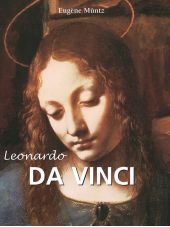 Leonardo pasó los primeros años de su vida en Florencia, su madurez en Milán y los últimos tres años de su existencia en Francia. El maestro de Leonardo fue Verrocchio. Primero fue orfebre, luego pintor y escultor: como pintor, fue representante de la escuela científica del dibujo; más famoso como escultor con la estatua Colleoni en Venecia, Leonardo fue además un hombre de gran atractivo físico, encantador en sus modales y conversación y poseedor un intelecto superior. Era versado en las ciencias y las matemáticas de su época, además de ser un músico de grandes dotes. Su habilidad como dibujante era extraordinaria y puede verse en sus numerosos dibujos, así como en sus comparativamente escasas pinturas. Su habilidad manual estuvo al servicio de la más minuciosa observación e investigación analítica del carácter y la estructura de las formas. Leonardo fue el primero de los grandes hombres que tuvieron el deseo de captar en una pintura un cierto tipo de comunión mística creada por la fusión de la materia y el espíritu. Ya terminados los experimentos de los Primitivos, realizados de forma incesante durante dos siglos, y con el dominio de los métodos de pintura, fue capaz de pronunciar las palabras que sirvieron de contraseña a todos artistas posteriores dignos de tal nombre: la pintura es una cuestión espiritual, cosa mentale. Completó el dibujo florentino con el modelado por luz y sombras, un sutil recurso que sus predecesores sólo habían usado para dar una mayor precisión a sus contornos. Usó ese maravilloso talento en el dibujo, así como su manera de modelar la figura y el claroscuro, no sólo para pintar la apariencia exterior del cuerpo, sino para hacer algo que nunca se había logrado con tal maestría: plasmar en sus obras un reflejo del misterio de la vida interior. En la Mona Lisa y sus otras obras maestras llegó a utilizar el paisaje como algo más que una mera decoración pintoresca, convirtiéndolo en una especie de eco de esa vida interior y en un elemento de la armonía perfecta. A través de las todavía muy recientes leyes de la perspectiva, este docto erudito, que además fue un iniciador del pensamiento moderno, substituyó la manera discursiva de los Primitivos por el principio de concentración, que es la base del arte clásico. La pintura ya no se presenta al espectador como un conjunto casi fortuito de detalles y episodios. Se convierte en un organismo en el que todos los elementos, las líneas y colores, las sombras y la luz componen una trama sutil que converge en un centro a la vez sensual y espiritual. La preocupación de Leonardo no era la importancia externa de los objetos, sino su trascendencia interna y espiritual. ... Далее
Leonardo pasó los primeros años de su vida en Florencia, su madurez en Milán y los últimos tres años de su existencia en Francia. El maestro de Leonardo fue Verrocchio. Primero fue orfebre, luego pintor y escultor: como pintor, fue representante de la escuela científica del dibujo; más famoso como escultor con la estatua Colleoni en Venecia, Leonardo fue además un hombre de gran atractivo físico, encantador en sus modales y conversación y poseedor un intelecto superior. Era versado en las ciencias y las matemáticas de su época, además de ser un músico de grandes dotes. Su habilidad como dibujante era extraordinaria y puede verse en sus numerosos dibujos, así como en sus comparativamente escasas pinturas. Su habilidad manual estuvo al servicio de la más minuciosa observación e investigación analítica del carácter y la estructura de las formas. Leonardo fue el primero de los grandes hombres que tuvieron el deseo de captar en una pintura un cierto tipo de comunión mística creada por la fusión de la materia y el espíritu. Ya terminados los experimentos de los Primitivos, realizados de forma incesante durante dos siglos, y con el dominio de los métodos de pintura, fue capaz de pronunciar las palabras que sirvieron de contraseña a todos artistas posteriores dignos de tal nombre: la pintura es una cuestión espiritual, cosa mentale. Completó el dibujo florentino con el modelado por luz y sombras, un sutil recurso que sus predecesores sólo habían usado para dar una mayor precisión a sus contornos. Usó ese maravilloso talento en el dibujo, así como su manera de modelar la figura y el claroscuro, no sólo para pintar la apariencia exterior del cuerpo, sino para hacer algo que nunca se había logrado con tal maestría: plasmar en sus obras un reflejo del misterio de la vida interior. En la Mona Lisa y sus otras obras maestras llegó a utilizar el paisaje como algo más que una mera decoración pintoresca, convirtiéndolo en una especie de eco de esa vida interior y en un elemento de la armonía perfecta. A través de las todavía muy recientes leyes de la perspectiva, este docto erudito, que además fue un iniciador del pensamiento moderno, substituyó la manera discursiva de los Primitivos por el principio de concentración, que es la base del arte clásico. La pintura ya no se presenta al espectador como un conjunto casi fortuito de detalles y episodios. Se convierte en un organismo en el que todos los elementos, las líneas y colores, las sombras y la luz componen una trama sutil que converge en un centro a la vez sensual y espiritual. La preocupación de Leonardo no era la importancia externa de los objetos, sino su trascendencia interna y espiritual. ... Далее -
12.
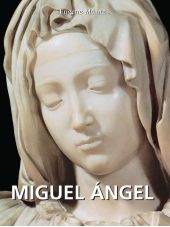 Miguel Ángel, al igual que Leonardo, fue un hombre de muchos talentos: escultor, arquitecto, pintor y poeta; logró expresar la apoteosis del movimiento muscular, que para él era la manifestación física de la pasión. Llevó el arte del dibujo a los límites extremos de sus posibilidades, estirándolo, moldeándolo y hasta retorciéndolo. En las pinturas de Miguel Ángel no hay paisajes de ningún tipo. Todas las emociones, todas las pasiones, todos los pensamientos de la humanidad están personificados, para él, en los cuerpos desnudos de hombres y mujeres. Rara vez concibió formas humanas en poses de inmovilidad o reposo. Miguel Ángel se convirtió en pintor para poder expresar en un medio más maleable lo que su alma de titán sentía, lo que su imaginación de escultor veía, pero que la escultura le negaba. Así, este admirable escultor se convirtió en el creador de la decoración más lírica y épica jamás contemplada: la Capilla Sixtina en el Vaticano. La vastedad de su ingenio está plasmada sobre esta vasta superficie de más de 900 metros cuadrados. Cuenta con 343 figuras principales con una prodigiosa variedad de expresiones, muchas de ellas en tamaño colosal, y además un gran número de personajes secundarios que se introdujeron como efecto decorativo. El creador de este gigantesco diseño tenía sólo treinta y cuatro años cuando comenzó su trabajo. Miguel Ángel nos obliga a ampliar nuestro concepto de lo que es la belleza. Para los griegos se trataba de la perfección física, pero a Miguel Ángel poco le importaba la belleza física, salvo en ciertas ocasiones, como en el caso de su pintura de Adán en la capilla Sixtina y de sus esculturas de la Pietà. Aunque era maestro en anatomía y en las leyes de la composición, se atrevió a hacer caso omiso de ambas cuando le era necesario para expresar sus ideas: exageraba los músculos en sus figuras y hasta las colocaba en posiciones que el cuerpo humano no puede asumir naturalmente. En una de sus últimas pintura, El juicio final en el muro del fondo de la Capilla Sixtina, dejó fluir su alma como en un torrente. Miguel Ángel fue el primero en hacer que la figura humana expresara una amplia variedad de emociones. En sus manos, la emoción se convertía en un instrumento que podía tocar para extraer temas y armonías de infinita diversidad. Sus figuras llevan nuestra imaginación mucho más allá del significado personal de los nombres que poseen. ... Далее
Miguel Ángel, al igual que Leonardo, fue un hombre de muchos talentos: escultor, arquitecto, pintor y poeta; logró expresar la apoteosis del movimiento muscular, que para él era la manifestación física de la pasión. Llevó el arte del dibujo a los límites extremos de sus posibilidades, estirándolo, moldeándolo y hasta retorciéndolo. En las pinturas de Miguel Ángel no hay paisajes de ningún tipo. Todas las emociones, todas las pasiones, todos los pensamientos de la humanidad están personificados, para él, en los cuerpos desnudos de hombres y mujeres. Rara vez concibió formas humanas en poses de inmovilidad o reposo. Miguel Ángel se convirtió en pintor para poder expresar en un medio más maleable lo que su alma de titán sentía, lo que su imaginación de escultor veía, pero que la escultura le negaba. Así, este admirable escultor se convirtió en el creador de la decoración más lírica y épica jamás contemplada: la Capilla Sixtina en el Vaticano. La vastedad de su ingenio está plasmada sobre esta vasta superficie de más de 900 metros cuadrados. Cuenta con 343 figuras principales con una prodigiosa variedad de expresiones, muchas de ellas en tamaño colosal, y además un gran número de personajes secundarios que se introdujeron como efecto decorativo. El creador de este gigantesco diseño tenía sólo treinta y cuatro años cuando comenzó su trabajo. Miguel Ángel nos obliga a ampliar nuestro concepto de lo que es la belleza. Para los griegos se trataba de la perfección física, pero a Miguel Ángel poco le importaba la belleza física, salvo en ciertas ocasiones, como en el caso de su pintura de Adán en la capilla Sixtina y de sus esculturas de la Pietà. Aunque era maestro en anatomía y en las leyes de la composición, se atrevió a hacer caso omiso de ambas cuando le era necesario para expresar sus ideas: exageraba los músculos en sus figuras y hasta las colocaba en posiciones que el cuerpo humano no puede asumir naturalmente. En una de sus últimas pintura, El juicio final en el muro del fondo de la Capilla Sixtina, dejó fluir su alma como en un torrente. Miguel Ángel fue el primero en hacer que la figura humana expresara una amplia variedad de emociones. En sus manos, la emoción se convertía en un instrumento que podía tocar para extraer temas y armonías de infinita diversidad. Sus figuras llevan nuestra imaginación mucho más allá del significado personal de los nombres que poseen. ... Далее -
13.
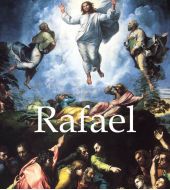 Rafael fue el artista más parecido al gran escultor Pheidias. Los griegos decían que este último no había inventado nada, pero fue capaz de llevar cada tipo de arte inventado por sus predecesores a tal cúspide, que logró alcanzar la armonía pura y perfecta. Estas palabras, “armonía pura y perfecta”, expresan, de hecho, mejor que cualquier otra, lo que Rafael llevó al arte italiano. De Perugino tomó toda la delicada gracia y sutileza de la escuela de Umbria, adquirió la fuerza y la certidumbre en Florencia, y creó un estilo basado en la fusión de las lecciones de Leonardo y de Miguel Ángel a la luz de su propio espíritu noble. Sus composiciones sobre el tema tradicional de la Virgen y el Niño les parecieron a sus contemporáneos intensamente novedosas, y sólo su gloria consagrada evita que percibamos en la actualidad su carácter original. Logró un trabajo aún más sorprendente en la composición y la realización de los frescos con los que, desde 1509, adornó las Stanze y la Loggia en el Vaticano. La cualidad de lo sublime, que Miguel Ángel alcanzó a través de su fervor y su pasión, Rafael la logró mediante un dominio del equilibrio entre la inteligencia y la sensibilidad. Una de sus obras maestras, La escuela de Atenas, fue decididamente hija de su genio: los diversos detalles, las cabezas, la suavidad del gesto, la facilidad de la composición, la vida que circula por todas las partes iluminadas son sus rasgos más característicos y admirables. ... Далее
Rafael fue el artista más parecido al gran escultor Pheidias. Los griegos decían que este último no había inventado nada, pero fue capaz de llevar cada tipo de arte inventado por sus predecesores a tal cúspide, que logró alcanzar la armonía pura y perfecta. Estas palabras, “armonía pura y perfecta”, expresan, de hecho, mejor que cualquier otra, lo que Rafael llevó al arte italiano. De Perugino tomó toda la delicada gracia y sutileza de la escuela de Umbria, adquirió la fuerza y la certidumbre en Florencia, y creó un estilo basado en la fusión de las lecciones de Leonardo y de Miguel Ángel a la luz de su propio espíritu noble. Sus composiciones sobre el tema tradicional de la Virgen y el Niño les parecieron a sus contemporáneos intensamente novedosas, y sólo su gloria consagrada evita que percibamos en la actualidad su carácter original. Logró un trabajo aún más sorprendente en la composición y la realización de los frescos con los que, desde 1509, adornó las Stanze y la Loggia en el Vaticano. La cualidad de lo sublime, que Miguel Ángel alcanzó a través de su fervor y su pasión, Rafael la logró mediante un dominio del equilibrio entre la inteligencia y la sensibilidad. Una de sus obras maestras, La escuela de Atenas, fue decididamente hija de su genio: los diversos detalles, las cabezas, la suavidad del gesto, la facilidad de la composición, la vida que circula por todas las partes iluminadas son sus rasgos más característicos y admirables. ... Далее -
14.
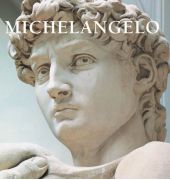 Miguel Ángel, al igual que Leonardo, fue un hombre de muchos talentos: escultor, arquitecto, pintor y poeta; logró expresar la apoteosis del movimiento muscular, que para él era la manifestación física de la pasión. Llevó el arte del dibujo a los límites extremos de sus posibilidades, estirándolo, moldeándolo y hasta retorciéndolo. En las pinturas de Miguel Ángel no hay paisajes de ningún tipo. Todas las emociones, todas las pasiones, todos los pensamientos de la humanidad están personificados, para él, en los cuerpos desnudos de hombres y mujeres. Rara vez concibió formas humanas en poses de inmovilidad o reposo. Miguel Ángel se convirtió en pintor para poder expresar en un medio más maleable lo que su alma de titán sentía, lo que su imaginación de escultor veía, pero que la escultura le negaba. Así, este admirable escultor se convirtió en el creador de la decoración más lírica y épica jamás contemplada: la Capilla Sixtina en el Vaticano. La vastedad de su ingenio está plasmada sobre esta vasta superficie de más de 900 metros cuadrados. Cuenta con 343 figuras principales con una prodigiosa variedad de expresiones, muchas de ellas en tamaño colosal, y además un gran número de personajes secundarios que se introdujeron como efecto decorativo. El creador de este gigantesco diseño tenía sólo treinta y cuatro años cuando comenzó su trabajo. Miguel Ángel nos obliga a ampliar nuestro concepto de lo que es la belleza. Para los griegos se trataba de la perfección física, pero a Miguel Ángel poco le importaba la belleza física, salvo en ciertas ocasiones, como en el caso de su pintura de Adán en la capilla Sixtina y de sus esculturas de la Pietà. Aunque era maestro en anatomía y en las leyes de la composición, se atrevió a hacer caso omiso de ambas cuando le era necesario para expresar sus ideas: exageraba los músculos en sus figuras y hasta las colocaba en posiciones que el cuerpo humano no puede asumir naturalmente. En una de sus últimas pintura, El juicio final en el muro del fondo de la Capilla Sixtina, dejó fluir su alma como en un torrente. Miguel Ángel fue el primero en hacer que la figura humana expresara una amplia variedad de emociones. En sus manos, la emoción se convertía en un instrumento que podía tocar para extraer temas y armonías de infinita diversidad. Sus figuras llevan nuestra imaginación mucho más allá del significado personal de los nombres que poseen. ... Далее
Miguel Ángel, al igual que Leonardo, fue un hombre de muchos talentos: escultor, arquitecto, pintor y poeta; logró expresar la apoteosis del movimiento muscular, que para él era la manifestación física de la pasión. Llevó el arte del dibujo a los límites extremos de sus posibilidades, estirándolo, moldeándolo y hasta retorciéndolo. En las pinturas de Miguel Ángel no hay paisajes de ningún tipo. Todas las emociones, todas las pasiones, todos los pensamientos de la humanidad están personificados, para él, en los cuerpos desnudos de hombres y mujeres. Rara vez concibió formas humanas en poses de inmovilidad o reposo. Miguel Ángel se convirtió en pintor para poder expresar en un medio más maleable lo que su alma de titán sentía, lo que su imaginación de escultor veía, pero que la escultura le negaba. Así, este admirable escultor se convirtió en el creador de la decoración más lírica y épica jamás contemplada: la Capilla Sixtina en el Vaticano. La vastedad de su ingenio está plasmada sobre esta vasta superficie de más de 900 metros cuadrados. Cuenta con 343 figuras principales con una prodigiosa variedad de expresiones, muchas de ellas en tamaño colosal, y además un gran número de personajes secundarios que se introdujeron como efecto decorativo. El creador de este gigantesco diseño tenía sólo treinta y cuatro años cuando comenzó su trabajo. Miguel Ángel nos obliga a ampliar nuestro concepto de lo que es la belleza. Para los griegos se trataba de la perfección física, pero a Miguel Ángel poco le importaba la belleza física, salvo en ciertas ocasiones, como en el caso de su pintura de Adán en la capilla Sixtina y de sus esculturas de la Pietà. Aunque era maestro en anatomía y en las leyes de la composición, se atrevió a hacer caso omiso de ambas cuando le era necesario para expresar sus ideas: exageraba los músculos en sus figuras y hasta las colocaba en posiciones que el cuerpo humano no puede asumir naturalmente. En una de sus últimas pintura, El juicio final en el muro del fondo de la Capilla Sixtina, dejó fluir su alma como en un torrente. Miguel Ángel fue el primero en hacer que la figura humana expresara una amplia variedad de emociones. En sus manos, la emoción se convertía en un instrumento que podía tocar para extraer temas y armonías de infinita diversidad. Sus figuras llevan nuestra imaginación mucho más allá del significado personal de los nombres que poseen. ... Далее -
15.
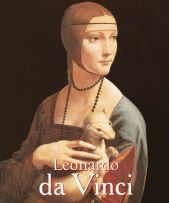 "War Leonardos deutliche Berufung zur wissenschaftlichen Forschung eine Hilfe oder ein Hindernis fur seine Arbeit als Kunstler? Er wird gewohnlich als ein Beispiel fur die Moglichkeit eines Bundnisses von Kunst und Wissenschaft angefuhrt. In ihm, so heit es zumeist, erhielt das schopferische Genie durch die analytische Fahigkeit zusatzlichen Antrieb; der Verstand verstarkte die Vorstellungskraft und die Gefuhle". ... Далее
"War Leonardos deutliche Berufung zur wissenschaftlichen Forschung eine Hilfe oder ein Hindernis fur seine Arbeit als Kunstler? Er wird gewohnlich als ein Beispiel fur die Moglichkeit eines Bundnisses von Kunst und Wissenschaft angefuhrt. In ihm, so heit es zumeist, erhielt das schopferische Genie durch die analytische Fahigkeit zusatzlichen Antrieb; der Verstand verstarkte die Vorstellungskraft und die Gefuhle". ... Далее -
16.
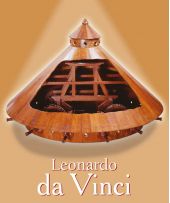 "War Leonardos deutliche Berufung zur wissenschaftlichen Forschung eine Hilfe oder ein Hindernis fur seine Arbeit als Kunstler? Er wird gewohnlich als ein Beispiel fur die Moglichkeit eines Bundnisses von Kunst und Wissenschaft angefuhrt. In ihm, so heit es zumeist, erhielt das schopferische Genie durch die analytische Fahigkeit zusatzlichen Antrieb; der Verstand verstarkte die Vorstellungskraft und die Gefuhle". ... Далее
"War Leonardos deutliche Berufung zur wissenschaftlichen Forschung eine Hilfe oder ein Hindernis fur seine Arbeit als Kunstler? Er wird gewohnlich als ein Beispiel fur die Moglichkeit eines Bundnisses von Kunst und Wissenschaft angefuhrt. In ihm, so heit es zumeist, erhielt das schopferische Genie durch die analytische Fahigkeit zusatzlichen Antrieb; der Verstand verstarkte die Vorstellungskraft und die Gefuhle". ... Далее
Комментарии:


